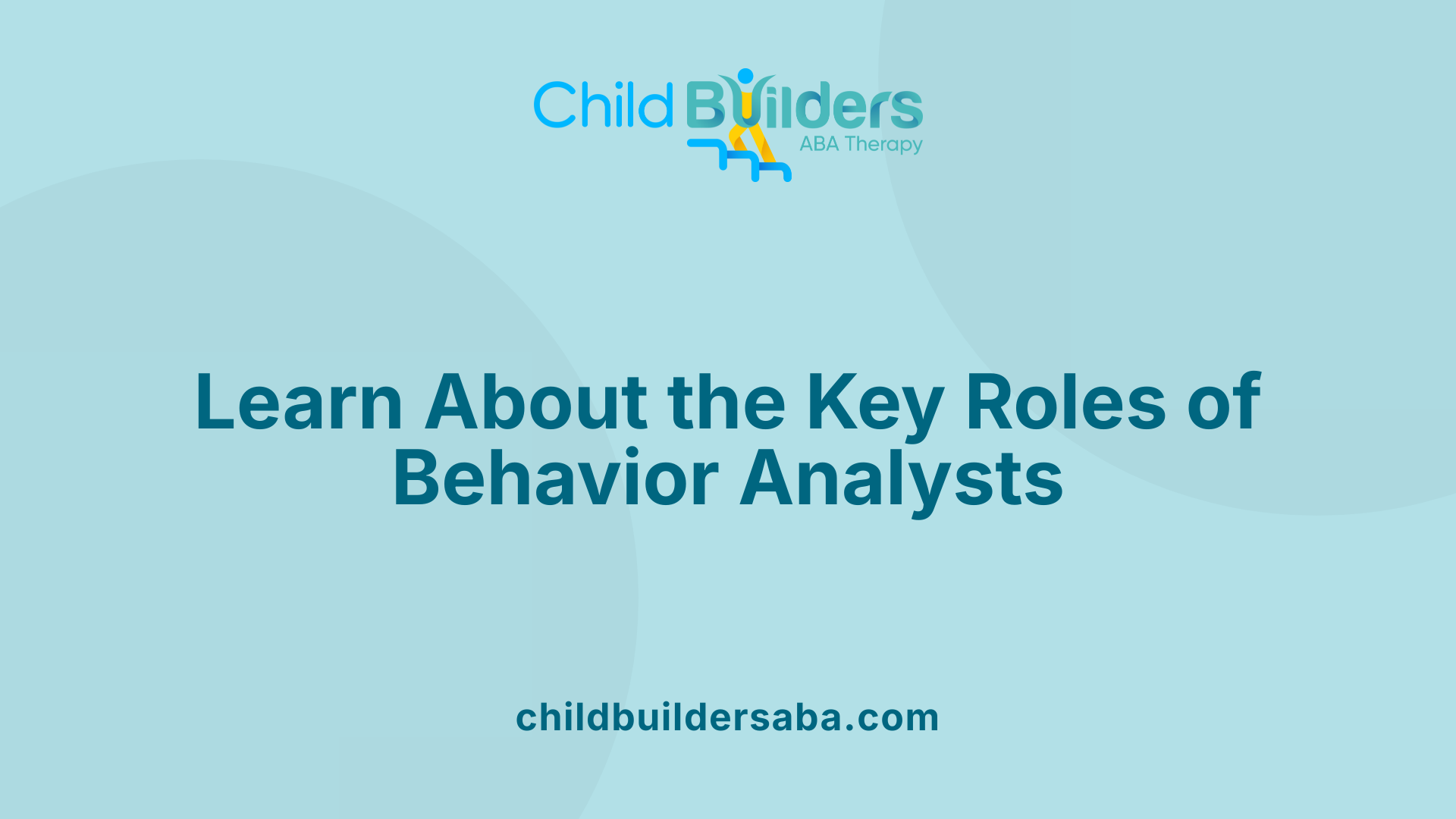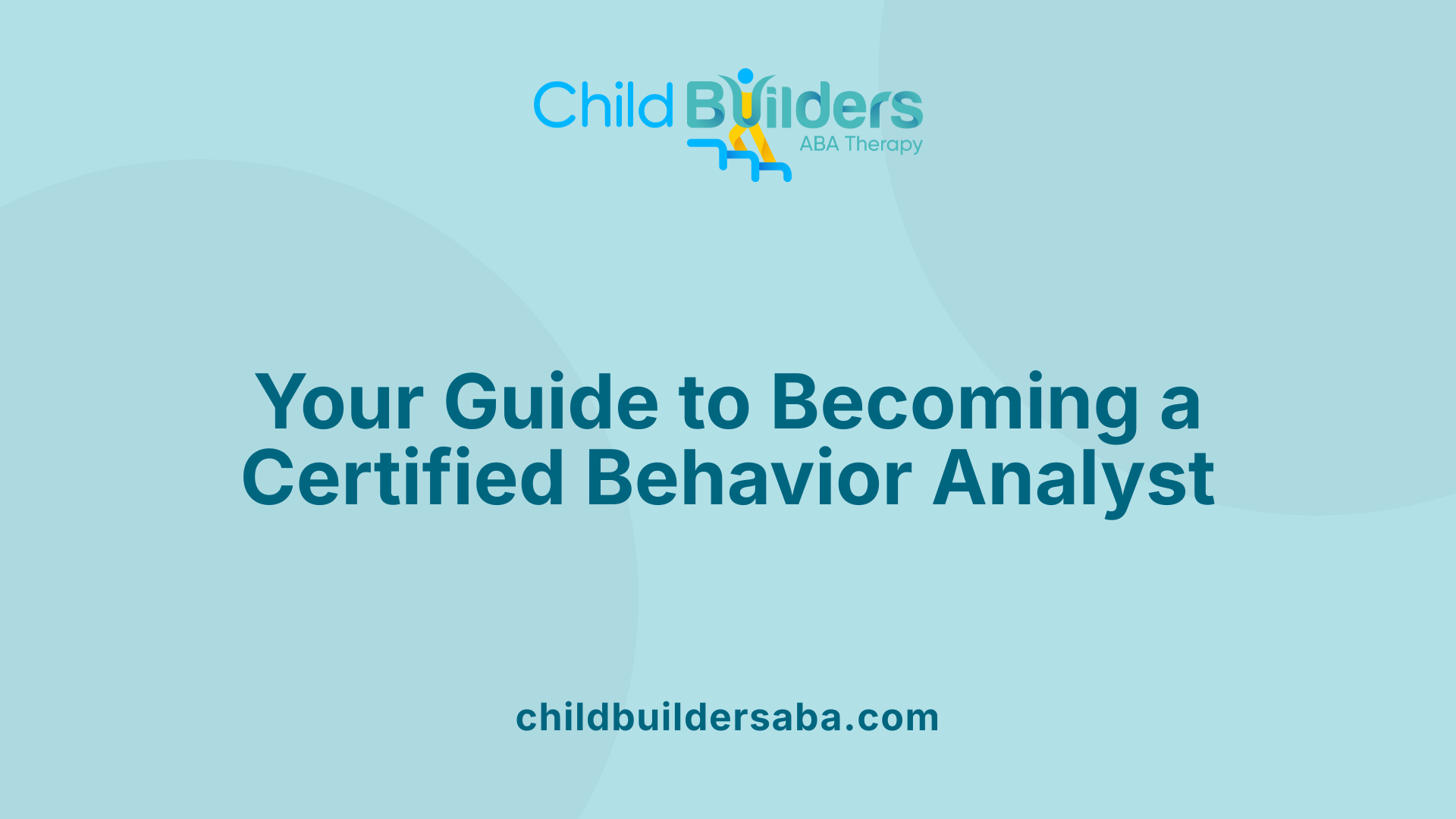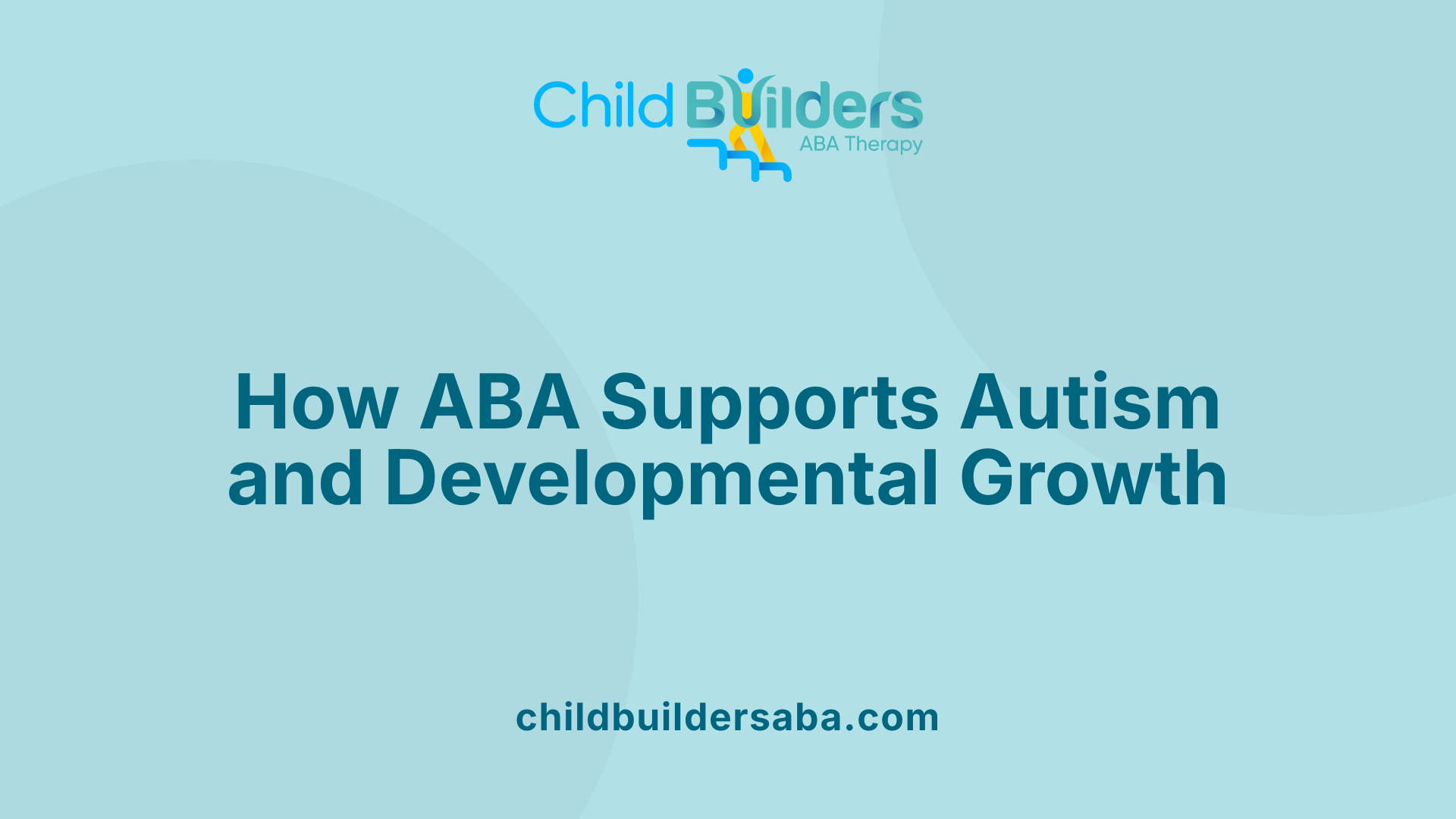What Is An Applied Behavior Analyst

Understanding the Foundations of ABA and Its Impact
Applied Behavior Analysis (ABA) is a scientifically grounded, evidence-based approach to understanding and modifying human behavior. With its roots in the principles of behaviorism, ABA has become a cornerstone in the treatment of autism spectrum disorder and other developmental conditions. It emphasizes the importance of environmental influences on behavior and systematically applies interventions designed to promote positive change. This article explores what ABA is, the roles of behavior analysts, the pathways to becoming qualified, and the profound effects of this therapy across various settings.
What Is Applied Behavior Analysis (ABA)?

What is applied behavior analysis (ABA)?
Applied Behavior Analysis (ABA) is a scientific, evidence-based approach to understanding and changing behavior. Rooted in principles of learning theory, ABA focuses on how environmental factors influence actions. It is widely used to help individuals, especially those with autism and other developmental disorders, develop vital skills.
The core of ABA involves analyzing behaviors and their relationship to the surrounding environment through systematic assessments. This helps identify reasons behind particular behaviors and how they can be modified.
Principles and scientific basis of ABA
ABA is based on foundational principles such as respondent and operant conditioning. It emphasizes the importance of reinforcement—positive or negative—to increase desired behaviors. ABA is a data-driven discipline, meaning decisions about treatment are guided by careful measurement and analysis of behaviors over time.
The science behind ABA supports its use in various areas like education and health, with a focus on socially significant behaviors that improve quality of life.
Techniques and methods in ABA
ABA employs a variety of techniques tailored to individual needs. Some common methods include:
- Discrete Trial Training (DTT): Breaking skills into small, teachable steps within structured sessions.
- Naturalistic Teaching: Using real-life situations to encourage spontaneous learning.
- Prompting and Fading: Guiding the individual toward the correct response and gradually reducing assistance.
- Functional Behavior Assessments (FBA): Analyzing why behaviors happen to develop effective interventions.
- Reinforcement Systems: Rewarding positive behaviors to encourage their recurrence.
These techniques help in teaching new skills, improving social interactions, and reducing challenging behaviors.
Goals and applications of ABA
The primary aim of ABA is to enhance helpful behaviors and diminish harmful or disruptive actions. It seeks to promote skills like communication, socialization, self-care, and academic abilities.
ABA is most notably used for individuals with autism but also benefits others with developmental disabilities, behavioral challenges, or mental health conditions. Its applications extend beyond therapy, including educational settings, organizational management, animal training, and health interventions.
Programs are highly personalized, with trained professionals such as Board Certified Behavior Analysts (BCBAs) designing and overseeing interventions. These programs are continually adjusted based on ongoing data collection to ensure the best possible outcomes.
By applying scientific principles and individual assessments, ABA has proven to be an effective approach for improving everyday functioning and independence.
The Responsibilities and Roles of a Behavior Analyst

What roles and responsibilities do applied behavior analysts have?
Applied behavior analysts, especially those who are Board Certified (BCBAs), play a vital role in understanding and improving behavior. Their main responsibility is to assess an individual's behavior using methods like functional behavior assessments, which help identify the reasons behind certain behaviors and how they relate to the environment.
Once they understand the behavior, BCBAs develop personalized intervention plans. These plans are based on scientific evidence and aim to increase helpful behaviors such as communication, social skills, and daily living skills, while decreasing problematic or interfering behaviors.
Implementation of ABA techniques is a core part of their work. They typically use strategies like positive reinforcement—rewarding desired actions to encourage repeat behavior—and other methods such as discrete trial training, prompting, fading, and task analysis.
Monitoring the effectiveness of interventions is critical. Behavior analysts continuously collect data on behaviors to track progress and determine if goals are being met. If strategies are not producing the desired results, they make data-driven adjustments to improve outcomes.
Collaboration with families, educators, healthcare providers, and other professionals is essential. BCBAs often train caregivers and staff to implement techniques consistently across environments, ensuring generalization and maintenance of new skills.
Moreover, they advocate for their clients' needs, uphold ethical standards, and keep their skills current through ongoing education. By working in various settings like schools, clinics, homes, and research facilities, these professionals help individuals enhance their independence, social participation, and overall quality of life.
In summary, applied behavior analysts are responsible for assessment, planning, implementation, and follow-up of behavior interventions. Their work is guided by a scientific approach that emphasizes effectiveness, ethical practice, and collaboration to foster meaningful improvements in clients' everyday lives.
Educational and Certification Pathways
 Becoming a qualified applied behavior analyst involves specific educational and certification steps. Firstly, prospective professionals generally need a master's degree in psychology, education, or a related field from an accredited institution. This degree should include coursework specifically in behavior analysis, covering topics such as ethics, assessment, and intervention strategies, with at least 21 to 36 credit hours as recommended by organizations like the Association for Behavior Analysis International (ABAI).
Becoming a qualified applied behavior analyst involves specific educational and certification steps. Firstly, prospective professionals generally need a master's degree in psychology, education, or a related field from an accredited institution. This degree should include coursework specifically in behavior analysis, covering topics such as ethics, assessment, and intervention strategies, with at least 21 to 36 credit hours as recommended by organizations like the Association for Behavior Analysis International (ABAI).
In addition to education, candidates must complete supervised fieldwork. The required experience typically ranges from 1,500 to 2,000 hours, depending on the certification pathway. This hands-on training allows aspiring analysts to apply their knowledge under the supervision of a qualified professional.
The next step is passing the BCBA (Board Certified Behavior Analyst) certification exam, administered by the Behavior Analyst Certification Board (BACB). This rigorous exam tests core competencies in behavior analysis, ensuring candidates are prepared to design and oversee effective interventions.
Maintaining certification requires ongoing professional development. Behavior analysts must complete continuing education units (CEUs), engage in supervision, and adhere to a strict code of ethics. Certification must be renewed every two years, with the completion of required CEUs to ensure practitioners keep up with current research and ethical standards.
For those seeking advanced credentials, the BCBA-D (Doctoral) is available, which allows holders to operate fully as a behavior analyst without additional privileges, but it requires doctoral-level training and research experience.
Overall, the pathway to becoming an applied behavior analyst is structured to promote high standards of knowledge, practical experience, and ongoing professional growth, ensuring practitioners can effectively support individuals across diverse settings.
Effectiveness of ABA in Treating Autism and Other Conditions

How effective is ABA therapy in treating autism and other conditions?
Research consistently supports Applied Behavior Analysis (ABA) as an effective, evidence-based treatment for autism spectrum disorder (ASD). Numerous studies have shown that ABA can significantly improve social skills, communication abilities, and adaptive functions for children with autism.
One of the most compelling pieces of evidence comes from early research by Ole Ivar Lovaas in the 1960s, which demonstrated that intensive ABA could lead to notable improvements, sometimes even resulting in children losing their diagnosis. Current best practices recommend early intervention—ideally before age four—with programs lasting 1 to 3 years, involving 25 to 40 hours of therapy per week.
Children with lower baseline skills often show especially marked progress, even with less intensive doses. The success of ABA depends heavily on personalized treatment plans, consistent implementation by trained professionals, and active caregiver involvement. Factors such as family support and ongoing assessment can influence how well a child responds to therapy.
Overall, research indicates strong evidence that ABA boosts language, social interactions, and daily living skills. Though individual results vary, the body of scientific literature confirms ABA as a highly effective approach to helping individuals with autism achieve meaningful developmental gains and improved independence.
Principles and Techniques of ABA Practice
What are some common techniques and practices used in applied behavior analysis?
Applied Behavior Analysis (ABA) employs a variety of techniques to help improve behaviors and teach new skills in a structured, evidence-based manner. One of the most widely used methods is positive reinforcement, which involves rewarding desired behaviors to increase their recurrence. Rewards can include praise, tokens, or preferred items, making the behavior more likely to happen again.
Prompting is another essential technique, where cues or hints are given to support learning. These prompts are gradually faded out to foster independence. For example, a therapist might physically guide a child's hand to help them point to an object, then gradually reduce assistance as the child gains skill.
Breaking down complex skills into smaller, manageable steps is achieved through task analysis. This method enables learners to acquire skills systematically, from simple to more complicated actions. For instance, teaching brushing teeth might be broken into steps like grasping the toothbrush, applying toothpaste, brushing, rinsing, and drying.
Assessing behavior functions and environmental factors is crucial, often through functional behavior assessments. These evaluations analyze antecedents—what happens before the behavior—and consequences—what happens afterward—to determine why certain behaviors occur and how best to intervene.
ABA also utilizes structured methods such as Discrete Trial Training (DTT), which involves repeated, clear teaching trials, and Natural Environment Training (NET), which emphasizes learning through everyday activities. Pivotal Response Treatment (PRT) offers a less structured approach, using play and natural reinforcement to teach social and communication skills.
Educational tools like visual supports, social stories, and video modeling help facilitate understanding and skills development. Functional Communication Training (FCT) teaches individuals to communicate effectively to reduce problem behaviors.
In summary, ABA incorporates numerous techniques, each tailored to the individual’s needs, aiming to systematically encourage positive behaviors and diminish challenging ones through scientific strategies rooted in learning theory.
Career Opportunities and Future Outlook in Behavior Analysis
What career opportunities and professional pathways exist for behavior analysts?
Careers in behavior analysis are broad and versatile, spanning various settings like clinics, schools, research institutions, and private consulting firms. With the right academic background and certifications, such as becoming a Board Certified Behavior Analyst (BCBA) or holding a BCBA-D credential, professionals can access a range of roles.
Among the most common positions are clinical supervisors who oversee therapy programs, autism specialists focused on developmental interventions, behavioral therapists working directly with clients, early intervention specialists working with young children, and university instructors conducting research and training future professionals.
Advancement within the field often involves pursuing additional certifications, specialized training, and licensure, enabling practitioners to expand their scope of work and leadership responsibilities. Continuous professional development through workshops, conferences, and coursework ensures practitioners stay current with evolving methodologies.
Work environments
Behavior analysts work in numerous settings, including healthcare facilities, educational settings, homes, and community programs. Schools often employ behavior analysts to develop individualized education plans, while clinics and hospitals may focus on treatment for autism and other developmental disorders. Some work in research institutions exploring the science of behavior, and others operate private practices or consulting agencies.
Professional advancement and specialization
Many behavior analysts pursue specializations in areas like organizational behavior management, brain injury rehabilitation, behavioral gerontology, or pediatric interventions. Advanced degrees and postdoctoral training open opportunities for higher-level roles, including clinical directors, program developers, or policy advisors.
Industry demand and job prospects
The demand for qualified behavior analysts is on the rise globally, especially given increasing recognition of ABA as an effective treatment for autism spectrum disorder—validated by organizations like the US Surgeon General and the American Psychological Association. With expanding legislation requiring insurance coverage, and a growing awareness of behavioral health, job prospects are strong.
The U.S. Bureau of Labor Statistics projects significant growth in this sector, reflected in high job security and competitive salaries, often around $70,000 annually for BCBAs, with potential for higher earnings with experience and additional qualifications.
| Aspect | Opportunities | Details |
|---|---|---|
| Career Paths | Clinical, Research, Education | Roles include therapists, supervisors, researchers, and educators |
| Work Environments | Schools, Clinics, Homes, Industry | Settings used to implement behavioral interventions |
| Specializations | Autism, Organizational, Gerontology | Focused areas for advanced practice |
| Industry Outlook | High growth | Driven by insurance policies, legislation, and awareness |
Overall, a career in applied behavior analysis offers meaningful work with a pathway for growth, leadership, and specialization, making it an increasingly attractive choice for dedicated professionals interested in behavioral science.
Addressing Misconceptions and Ethical Practice
What are some common myths about ABA and the responsibilities of behavior analysts?
There are many misconceptions surrounding Applied Behavior Analysis (ABA). Some believe it to be harmful, overly rigid, or solely reliant on punishment to modify behavior. However, these ideas are outdated and do not reflect current practices. Modern ABA is a flexible, personalized, and humane approach grounded in scientific research.
Behavior analysts play a crucial role in designing interventions that are ethically sound and tailored to individual needs. They use positive reinforcement techniques to encourage helpful behaviors and promote skill development, focusing on fostering independence and improving quality of life.
Practitioners like Board Certified Behavior Analysts (BCBAs) and Registered Behavior Technicians (RBTs) are qualified professionals committed to ethical standards. They assess the individual's needs carefully, develop evidence-based treatment plans, and ensure interventions are respectful, safe, and effective.
Understanding what ABA truly involves helps clarify that it is not about forcing compliance or using punishment, but rather about empowering individuals through supportive, scientifically validated methods.
What are the ethical principles and standards guiding behavior analysts?
Behavior analysts adhere to strict ethical guidelines established by organizations such as the Behavior Analyst Certification Board (BACB). These principles include beneficence (helping others), autonomy, inclusion, professional excellence, and social justice.
Standards emphasize client dignity, informed consent, and the importance of delivering interventions that are constructive and respectful. Analytic and technological qualities ensure approaches are data-driven, individualized, and transparent.
Practitioners are required to continuously update their skills, avoid conflicts of interest, and ensure that interventions do not cause harm, aligning their work with ethical commitments to enhance the client’s well-being.
How do client-centered, humane interventions look in practice?
In practice, humane ABA interventions prioritize respect and collaboration with clients. They incorporate naturalistic teaching strategies, such as pivotal response treatment (PRT) and the Early Start Denver Model (ESDM), which blend play, motivation, and natural environments.
This approach respects individual preferences and promotes positive relationships. It minimizes the use of punishment and negative consequences, focusing instead on teaching desired behaviors through reinforcement and modeling.
Family involvement and customizing sessions to suit individual interests are essential. These methods foster motivation, engagement, and meaningful progress in social, communication, and adaptive skills.
What role do behavior analysts play in ensuring ethical and effective therapy?
Behavior analysts are responsible for conducting thorough assessments, including functional behavior assessments, to understand why behaviors occur. They design personalized, evidence-based intervention plans and supervise their implementation.
Their role extends beyond direct intervention to training families, educators, and caregivers on effective strategies. They continuously monitor progress through data collection and analysis, making adjustments to ensure goals are met.
Ethical behavior analysts prioritize the person’s dignity, rights, and preferences throughout the process. They strive to create supportive, empowering environments that promote lasting, positive change.
More Information Search Query: Common misconceptions about ABA and behavior analysts
Understanding these aspects helps dispel myths and recognizes ABA as a compassionate, scientifically validated approach to improving lives.
The Future of Behavior Analysis and Career Growth

Emerging Trends
The field of Applied Behavior Analysis (ABA) is continuously evolving, with new approaches and techniques emerging to enhance effectiveness. Innovations such as naturalistic teaching methods and pivotal response training are gaining popularity for being less structured and more aligned with natural environments. Additionally, there's a trend towards integrating ABA with other therapeutic approaches, such as cognitive-behavioral therapy, to provide holistic support.
Technology and Innovation in ABA
Advances in technology are transforming ABA practice. Digital tools like apps, virtual reality, and data collection software streamline assessments and intervention implementation. Telehealth platforms now enable therapists to deliver services remotely, increasing accessibility for individuals in rural or underserved areas. Automated data analysis and machine learning algorithms are also helping professionals personalize programs more precisely and monitor progress effectively.
Global Expansion and Recognition
While ABA has been predominantly used in the United States, its recognition worldwide is growing. Countries are increasingly adopting ABA as a standard treatment for autism and developmental disabilities. This global expansion opens opportunities for international research collaborations, cross-cultural adaptations of therapy programs, and broader recognition of ABA practitioners.
Opportunities for Research and Leadership
Research remains at the core of ABA's development, with ongoing studies exploring new applications in health, education, and organizational behavior. Professionals are encouraged to contribute to evidence-based practices, develop innovative interventions, and participate in policy-making. Leadership opportunities also abound in academia, clinical administration, and advocacy, shaping the future landscape of this dynamic field.
| Aspect | Current Focus | Future Outlook |
|---|---|---|
| Emerging Trends | Naturalistic approaches, combined therapies | Personalized, context-aware methods |
| Technology & Innovation | Digital tools, telehealth, data analytics | AI integration, virtual simulations |
| Global Expansion | Increasing international adoption | Cultural adaptation, global standards |
| Research & Leadership | Evidence-based practices, policy influence | Innovative research, executive roles |
The Impact of ABA on Lives and Society
How ABA helps individuals gain independence
Applied Behavior Analysis (ABA) significantly improves the daily lives of individuals with developmental disabilities, especially autism. By teaching essential skills in communication, social interaction, and self-care, ABA empowers individuals to become more independent. Customized programs focus on specific goals like improving language skills or reducing harmful behaviors, enabling individuals to participate more fully in society.
Benefits for families and communities
Families often witness profound changes as children acquire new skills and become more socially engaged through ABA therapy. These improvements lessen caregiver stress and foster stronger family bonds. Communities benefit as individuals with developmental disabilities gain greater independence, allowing for better inclusion in educational, employment, and social activities.
Broader societal impacts
On a wider scale, ABA contributes to societal progress by advancing understanding of human behavior and promoting effective interventions. Widespread adoption of ABA-based practices in education, healthcare, and workplaces leads to healthier, more inclusive environments. Additionally, the evidence-based nature of ABA supports policy development and insurance coverage, making treatment accessible to more people.
Success stories and testimonials
Many families share stories of children who, after intensive ABA therapy, can communicate effectively, attend school regularly, and participate in community events. These testimonials highlight not just skill acquisition but increased happiness and confidence. Such narratives underscore ABA’s role in transforming lives, fostering a more inclusive and supportive society.
Empowering Change Through Science and Compassion
As a scientifically grounded discipline, applied behavior analysis (ABA) plays a vital role in transforming lives through tailored, ethical, and effective interventions. Certified behavior analysts are at the forefront of this field, designing personalized programs that foster skill development, independence, and social integration. The ongoing growth of ABA, driven by advances in technology and expanding recognition worldwide, promises exciting opportunities for professionals dedicated to improving behavioral outcomes. By understanding its principles, applications, and ethical responsibilities, society can better appreciate the profound impact of ABA in enhancing quality of life for individuals and communities alike.
References
- Applied Behavior Analysis (ABA) | Autism Speaks
- Applied behavior analysis - Wikipedia
- Applied Behavior Analysis (ABA) - Cleveland Clinic
- What is a Behavior Analyst and How Do You Become One?
- What Is a Behavior Analyst and How Do You Become One
- Applied Behavior Analysis - DDS.CA.gov
- Applied Behavior Analysis - Psychology Today
- 9 Careers in Applied Behavior Analysis | The Chicago School
- Applied Behavior Analysis: What Is It and How Does It Work? - WebMD
- What is Applied Behavior Analysis and Why Is It Important?





.jpg)































































































